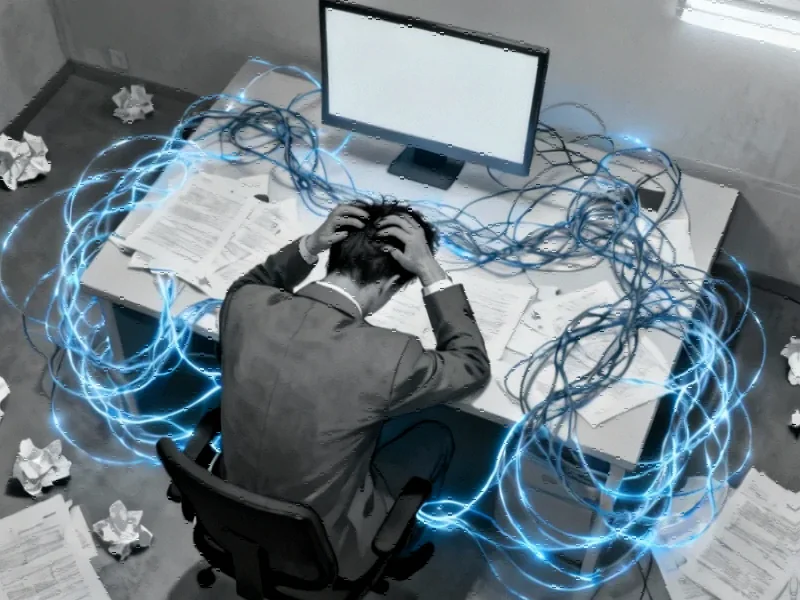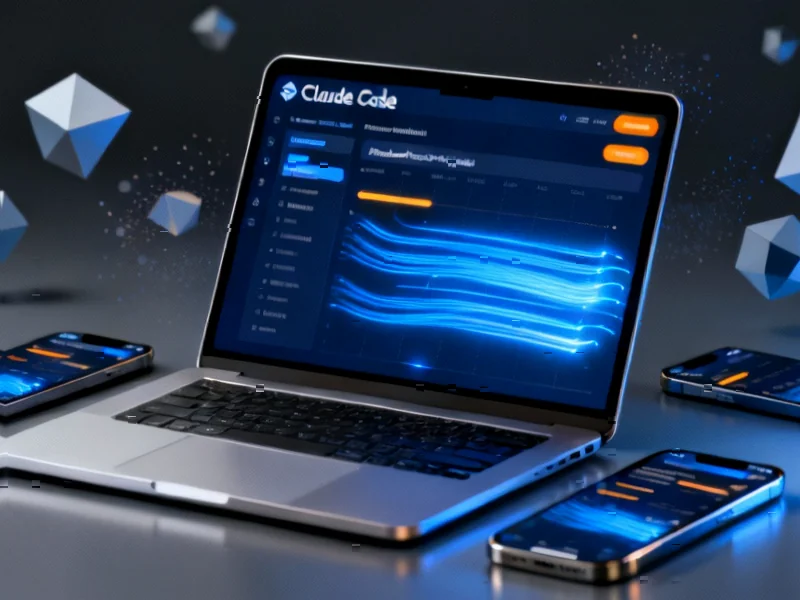The Silent Drain on Workplace Efficiency
As artificial intelligence becomes increasingly integrated into workplace processes, a troubling phenomenon is emerging that threatens to undermine the very efficiency gains AI promises to deliver. Dubbed “AI workslop” by researchers, this refers to AI-generated content that appears polished on the surface but lacks substantive value, often requiring significant human intervention to correct or complete.
Recent research from Melbourne Business School reveals that a staggering 66% of employees using AI at work have relied on AI output without proper evaluation. This complacent over-reliance creates a cascade of inefficiency, as colleagues must identify and correct errors that could have been prevented with proper oversight. The consequences extend beyond wasted time to include damaged professional relationships and organizational reputation.
Quantifying the Workslop Impact
The scale of this problem is substantial. According to a Harvard Business Review report cited by researchers, 40% of US workers received workslop from colleagues within a single month. Each instance took recipients nearly two hours to resolve – a productivity drain that translates to approximately $9 million annually for a 10,000-person organization.
Beyond the immediate time cost, workslop erodes workplace trust and collaboration. Recipients of poor-quality AI output report viewing the senders as less reliable, creative, and trustworthy. This aligns with broader industry developments showing that trust penalties often accompany AI implementation when not managed carefully.
The Transparency Crisis in AI Adoption
Compounding the workslop problem is the widespread covert use of AI technology. Research spanning 32,352 workers across 47 countries found that 61% avoid revealing when they’ve used AI, while 55% pass off AI-generated material as their own work. This lack of transparency makes it difficult to establish accountability and implement quality control measures.
Perhaps most concerning is that more than a quarter of employees report that AI has actually increased their workload, pressure, and time spent on mundane tasks – the opposite of its intended effect. This highlights how strategic shifts in global trade and business operations must be carefully managed to avoid unintended consequences.
Building Effective Human-AI Collaboration
The solution to workslop isn’t abandoning AI, but rather implementing it more thoughtfully. Employees can take three crucial steps to minimize workslop generation:
- Evaluate AI appropriateness: Before using AI for any task, ask whether it’s genuinely the best tool for the job
- Verify like an editor: Treat AI output as a draft requiring fact-checking, code testing, and contextual tailoring
- Practice transparency: When stakes are high, disclose AI use and verification processes to maintain trust
These practices align with related innovations in quality assurance across technology implementation, where verification and transparency prove critical to success.
Organizational Responsibility in Curbing Workslop
Employers play a crucial role in preventing workslop through strategic governance and education. Key organizational measures include:
- Developing clear AI usage guidelines specifying appropriate and inappropriate applications
- Building AI literacy programs that teach effective, responsible use
- Establishing accountability structures for AI-generated work
- Tracking outcomes to identify and address workslop patterns
Research shows that fewer than half of employees receive AI training or policy guidance, creating a critical literacy gap. Organizations that invest in comprehensive AI education see more critical engagement with AI tools and fewer errors. This approach to recent technology implementation ensures that human intelligence guides artificial intelligence, rather than being undermined by it.
The Path Forward: Quality Over Convenience
The workslop phenomenon underscores that AI implementation requires more than technological adoption – it demands cultural and procedural adaptation. As AI-generated workslop creating productivity drain becomes more recognized, organizations must prioritize quality assurance and human oversight.
Successful AI integration balances automation with critical human judgment. By understanding the market trends in AI implementation and learning from early adoption challenges, companies can avoid the workslop trap and genuinely enhance productivity rather than creating new forms of busywork. The future of effective AI use lies not in replacing human intelligence, but in augmenting it with appropriate checks and balances.
As research into unlocking evolution’s secrets demonstrates, adaptation to new environments requires both innovation and quality control. Similarly, businesses must evolve their practices to harness AI’s potential while maintaining standards of excellence and efficiency.
This article aggregates information from publicly available sources. All trademarks and copyrights belong to their respective owners.
Note: Featured image is for illustrative purposes only and does not represent any specific product, service, or entity mentioned in this article.


